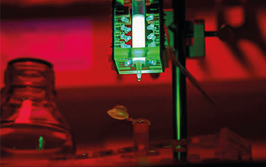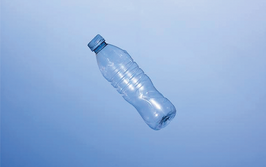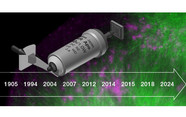
Exploring the Exposome – Part 2: Glyphosate in Drinking Water
How innovative method development can help us to understand the impact of glyphosate pollution on our drinking water
Simon Hird | 3 min read | Discussion
sponsored by Waters

In part one of Exploring the Exposome, we considered the need for a more complete – and proactive – understanding of the chemical composition of what we consume and the relationship these compounds have to our health. Central to this endeavor is accurately and reliably monitoring the levels of certain pollutants in our food or drinking water.
Consider glyphosate – an active substance that is often found in pesticide formulations and mainly used for agricultural and non-agricultural weed control. Its widespread use has prompted multiple studies to determine if glyphosate is potentially harmful to ecological or human health. Although the debate around its carcinogenicity and impact on biodiversity continues, its use as a herbicide remains approved in many countries around the world.
Pesticides can get into surface waters by direct spraying close to rivers or streams, via run-off, and through erosion of land into a water course. They can also seep through soil into groundwater. Glyphosate and its principal metabolite, aminomethylphosphonic acid (AMPA), have been frequently detected at low levels in surface and groundwater. In many countries, public drinking water supplies are abstracted from such water sources – contributing to chronic dietary exposure to glyphosate. The presence of glyphosate in drinking water is regulated in most parts of the world, but maximum limits vary widely. The EU set a parametric value of 100 ng/L for each pesticide – but elsewhere limits are much higher.
Accurate and reliable methods are required to monitor water for compliance with regulatory limits and to gain a better understanding of the presence of these compounds in the environment and in drinking water. Glyphosate and AMPA are highly polar anionic compounds, so methods have relied on derivatization using 9-fluorenylmethylchloroformate (FMOC–Cl) before solid-phase extraction (SPE) and liquid chromatography (LC) determination, often coupled with tandem mass spectrometry (MS/MS). Direct analysis of drinking water without any preparation or derivatization involves fewer steps; therefore, it is much quicker to perform.
The Anionic Polar Pesticide column uses a diethylamine ligand bonded to ethylene bridged hybrid (BEH) particle technology. This specialized column provides a mixture of different chromatographic interactions controlling retention characteristics and generating the required selectivity and peak shape – crucially, using MS-friendly mobile phases. In fact, we developed and validated a method for glyphosate and AMPA using direct injection by LC-MS/MS (1). The method is sensitive, specific, accurate, and suitable for the determination of these challenging analytes in a range of different types of drinking water – and can be used to check compliance with regulatory limits.
You can find a summary of the study below – a good example of the way in which analytical innovation can help us understand the impact of environmental pollution on the safety of drinking water, while also setting the stage for future studies focusing on human exposure.
For more information on pesticides testing, check out our Overview of Pesticide Testing eBook.
Study: Determination of Glyphosate and AMPA Using LC-MS/MS
- The performance of the method was assessed using spiked water samples.
- Reliable detection was achieved at concentrations as low as 10 ng/L.
- The trueness of the method was between 82 and 110 percent.
- Close agreement was observed: repeatability, and intra- and inter-laboratory reproducibility were all <16 percent RSD (1).
This article is the second in a series of articles from Waters, “Exploring the Exposome” – and the analytical advances improving our understanding of exogenous compound exposure. To find out more, visit our content hub.

- Waters, “Determination of Glyphosate, Aminomethylphosphonic Acid (AMPA), and Glufosinate in Drinking Water Using Direct Analysis by LC-MS/MS (2023). Available at: https://bit.ly/3T947eM.
Strategic Analyst; Research, Development & Advanced Testing; Waters Corporation

















